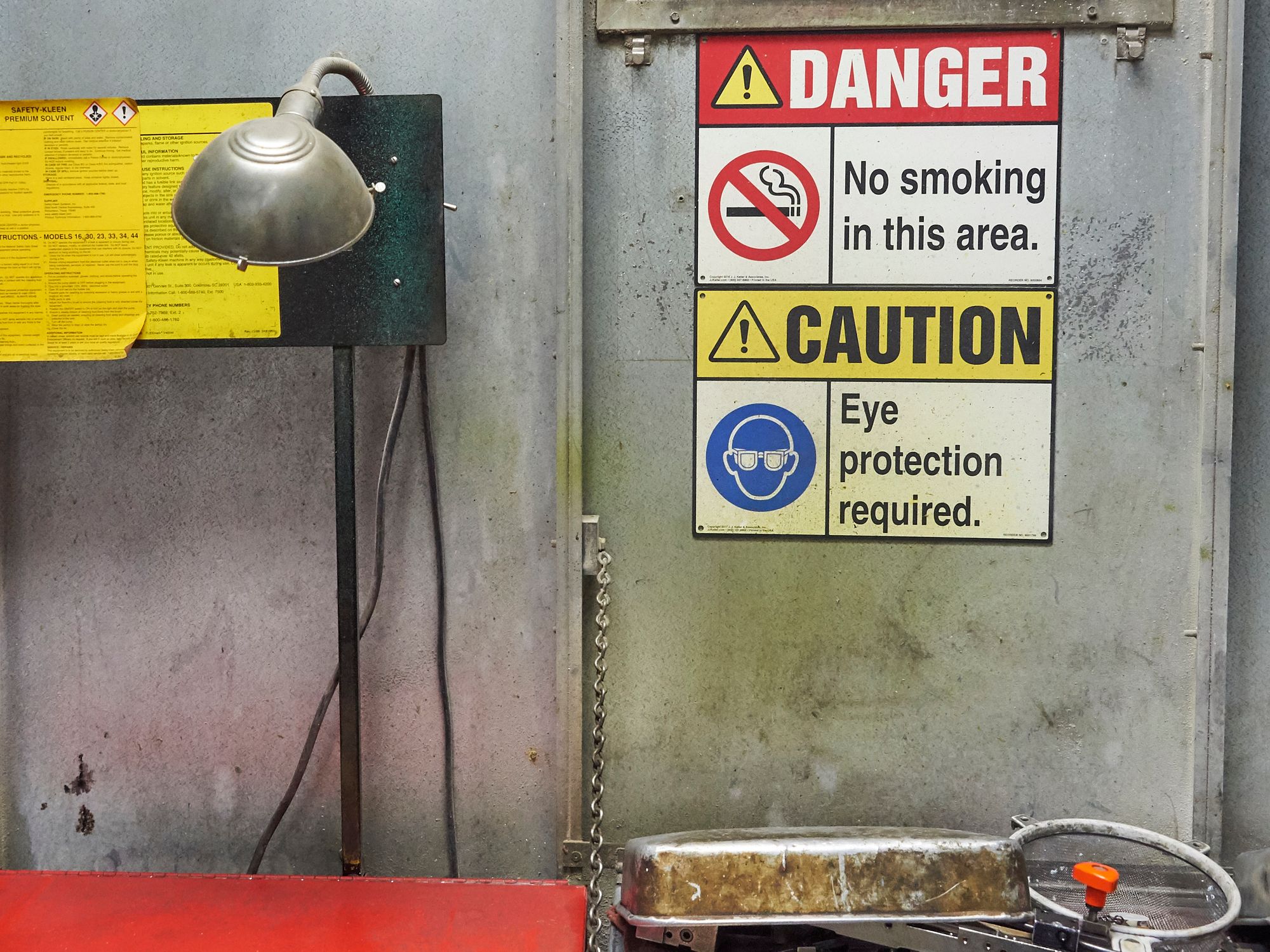Special considerations

- LQGs have additional requirements if they store ignitable or reactive wastes.
- A facility cannot place incompatible wastes in the same container unless the facility follows specific requirements.
Special considerations for ignitable and reactive wastes
Large quantity generators (LQGs) have additional requirements if they store ignitable or reactive wastes. These requirements are considered to be best management practices for small quantity generators (SQGs) and very small quantity generators (VSQGs). At a minimum, keep ignitable or reactive wastes away from:
- Fire,
- Hot surfaces such as operating machinery or engines,
- Radiant heat or sunlight,
- Cutting and welding operations,
- Frictional heat (keep drums from being pulled along the ground),
- Sparks from static electricity, electrical operations, or friction,and
- Water or water vapor (if the waste is water-reactive).
A business may need to ground the containers before adding or removing waste, and there should be “No Smoking” signs posted in all areas near ignitable or reactive wastes.
Special considerations for incompatible wastes
The regulations do not allow a facility to place incompatible wastes in the same container unless the facility follows specific requirements found in 265.17. This is a safety measure to keep wastes from reacting with each other and possibly exploding or catching fire.
If the facility must mix incompatible wastes in the same container, the facility must make sure they do not react. The facility must:
- Keep the waste from becoming too hot.
- Keep the waste from producing toxic and/or flammable mists, gases, fumes, or dust.
- Make sure that mixing the waste will not damage the container.
- Demonstrate that mixing the wastes will not threaten workers or the environment.
